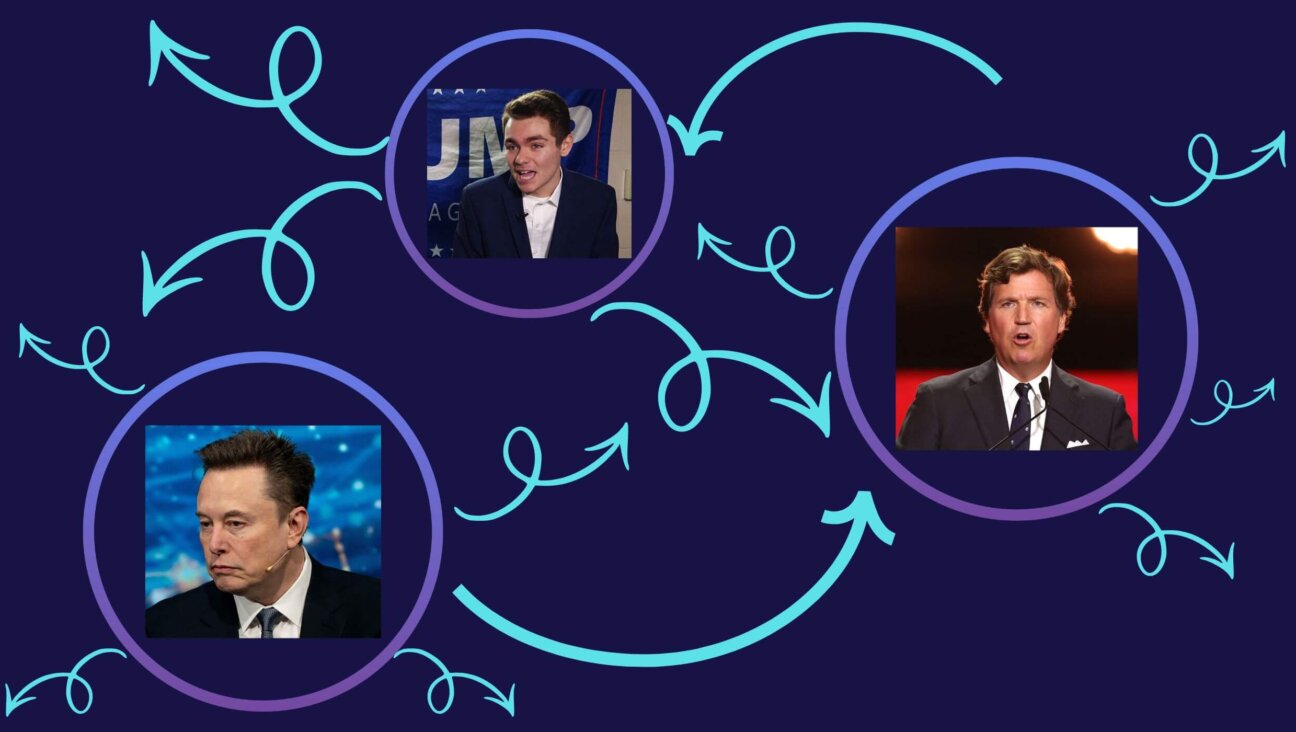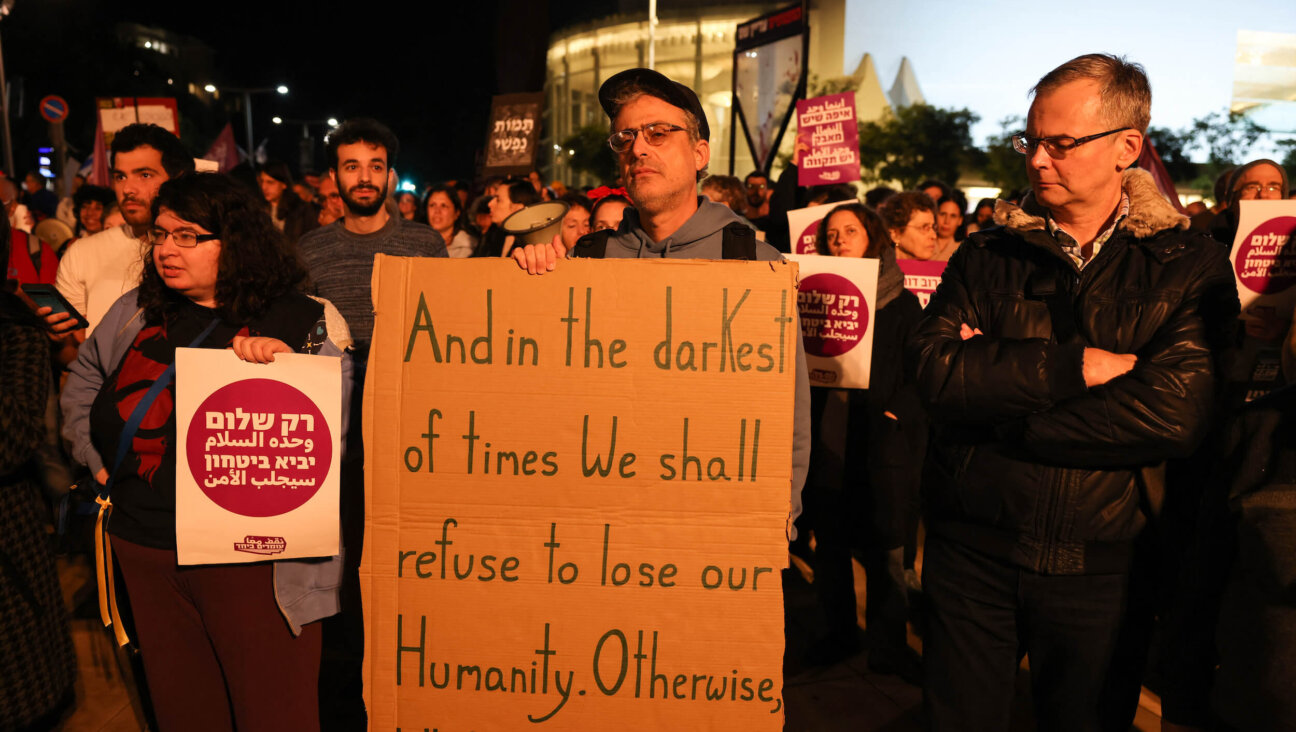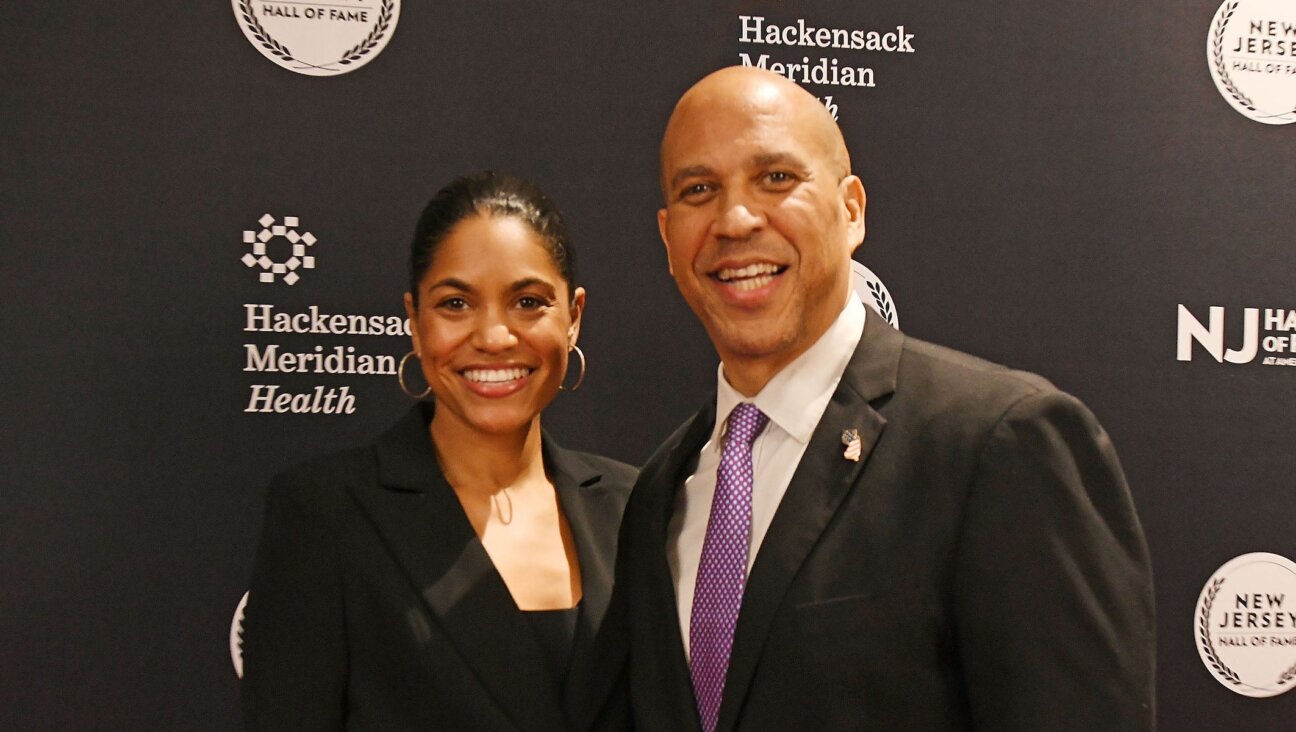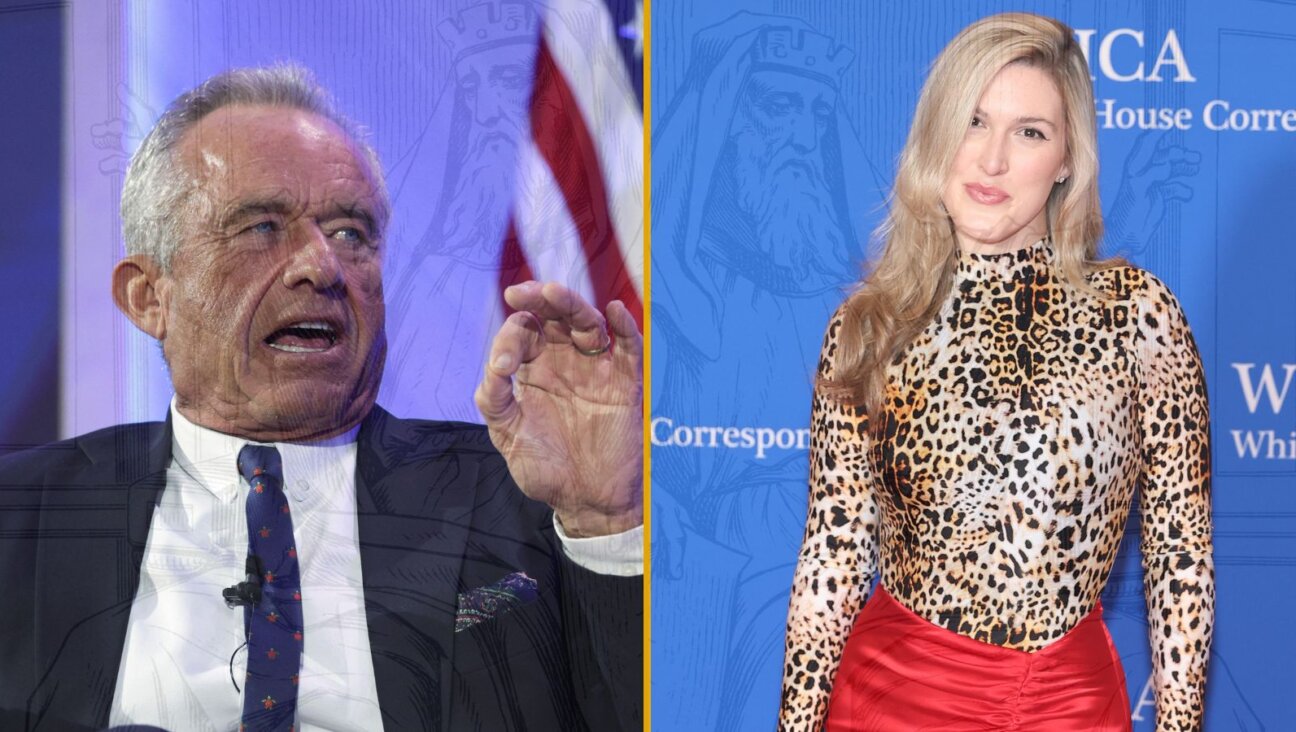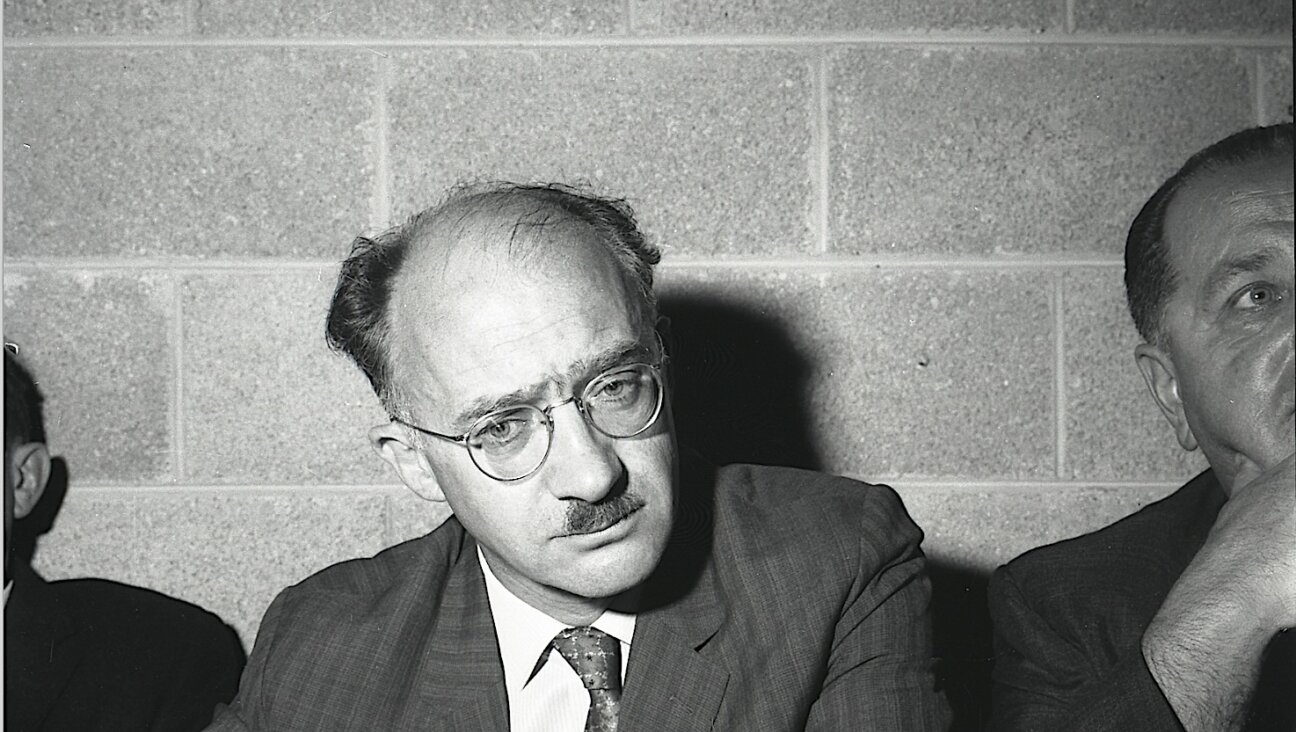As Trump officials cozy up to Germany’s far right, everything alt is neu again
As AfD continues to court Trump and his MAGA movement, how worried should American Jews be?

Hundreds of thousands of German-Americans show their affinity for Hitler by raising their hands in a Nazi salute during an annual “German Day” at Camp Siegfried in Long Island, 1937. Photo by Getty Images
In the 1930s, American Nazis looked to Berlin for inspiration. The German-American Bund held torchlit rallies in New York, slandered Jews, preached white supremacy, and sent their children to Hitler Youth-style summer camps for indoctrination — all in service of importing the Führer’s vision to U.S. soil.
Nine decades later, the current is flowing in reverse, as Germany’s far-right Alternative für Deutschland (Alternative for Germany) party makes pilgrimages to Washington, D.C. — at the invitation of Trump administration officials who see the German party as unfairly ostracized.

This September, two top AfD figures met with staff from Vice President JD Vance’s office and with State Department employees. Later that month, more AfD parliamentarians arrived in D.C., where they conferred with Darren Beattie, a former Trump speechwriter now embedded in the State Department.
Over the past several months, the Trump administration has, in effect, taken the AfD under its wing. Trump’s MAGA movement and the AfD both cast themselves as defenders of a civilization threatened by nonwhite outsiders, and both have tolerated displays of antisemitism from operatives within their ranks.
At Trump’s Jan. 20 inauguration rally, Elon Musk made a gesture resembling a Nazi salute and declared, “My heart goes out to you. It is thanks to you that the future of civilization is assured.” Musk later denied any Nazi intent. But he raised eyebrows again when he appeared remotely at an AfD campaign rally in Halle, Germany, in February, where he praised the party as “the best hope for Germany” and urged citizens to “move beyond” their country’s Nazi past.
At the annual Munich Security Conference in mid-February, Vance rattled America’s European partners by saying democracy in Europe was threatened not by populist parties like the AfD, but by governments’ refusal to treat them like legitimate political actors. Vance added insult to injury by having a private meeting with Alice Weidel, co-leader of the AfD, before returning to the states.
This chummy relationship between the Trump administration and a German political party that has been designated an extremist organization by German intelligence presents a sort of reverse mirror image of the state of affairs between the two countries back in the 1930s.
Let’s set the time machine back to July 18, 1937, and the location to a summer camp in New Jersey — Camp Nordland. Operated by the German-American Bund, it wasn’t just a retreat; it was a staging ground for fascist pageantry. Swastika flags flanked the entrance. Uniformed men marched in formation. Children sang songs of Aryan pride. Politicians and Bund leaders gave speeches praising Hitler’s vision and denouncing Roosevelt’s “Jewish government.” It was America’s own slice of the Reich, nestled in the woods of Sussex County.
Camp Nordland was not an isolated hive of American-style Nazism. There were about 200 other camps like it, stretched across the nation.
The Bund’s rallies were near-perfect replicas of Nazi spectacles in Germany, none more brazen than the one held at Madison Square Garden on Feb. 20, 1939. More than 20,000 people packed the arena as uniformed men and women marched down the aisles in Nazi-style regalia. Swastikas flanked a towering portrait of George Washington. The crowd raised stiff-arm salutes as Bund leader Fritz Kuhn took the stage and declared, to roaring applause, that “the Jew is one thousand times more dangerous to us than all the others” and that the government must be “returned to the American people who founded it.”
The Bund’s dream of an American Reich collapsed soon after. Kuhn was convicted of embezzlement. The FBI cracked down. World War II made their allegiance to Hitler politically toxic. Camp Nordland was raided and shut down in 1941. But the ideology didn’t die — it went dormant, and it is resurfacing on both sides of the Atlantic.
Following the AfD’s September visits to Washington, Trump adviser Alex Bruesewitz traveled to Berlin in November, calling the AfD members of the Bundestag and party supporters “bold visionaries.”
“We are in this together,” said Bruesewitz, according to Politico. “The forces arrayed against us aren’t just ideological opponents, they’re manifestations of evil, seeking to extinguish the light of faith, family and freedom.”
“This spiritual battle isn’t confined to the United States,” he continued. “Oh, no. Germany and America may be separated by thousands of miles of ocean, but we face the same exact enemies, the same threats, the same insidious forces trying to tear us down.”
A month before Bruesewitz’s trip to Berlin, two AfD lawmakers were treated to a private reception in Manhattan, where an opera tenor serenaded them with the first stanza of “Deutschland über Alles” — a verse officially excluded from Germany’s national anthem and widely considered taboo for its Nazi associations, according to a Reuters report. The event was hosted by the New York Young Republican Club, a chapter of the national Young Republican Federation. Notably, a fall exposé by Politico revealed leaked Telegram messages from Young Republican leaders in multiple states, in which members praised Hitler, joked about gas chambers, slandered Jews and Black Americans, and fantasized about violence against political opponents.
All of this raises the question: Is there any danger in this transatlantic camaraderie between Trump’s MAGA movement and the AfD? Probably more so for Germans than for Americans.
The AfD has become a powerful player in German politics since its emergence just twelve years ago, rising from a fringe Euroskeptic movement to a dominant force — especially in the former East, where economic dislocation and cultural resentment have fueled its ascent. While Germany’s mainstream parties have steadily shed voters, the AfD has gained them. Of the Bundestag’s 630 seats, the AfD now holds 152, making it the second-largest delegation in the federal parliament. And yet, despite its electoral strength, the AfD remains politically isolated: Germany’s mainstream parties have refused to cooperate with the AfD on legislation or coalition-building.
The AfD hopes its courtship of Trump and his MAGA movement will increase pressure on Germany’s governing Christian Democrat–Social Democrat coalition to dismantle the firewall that has kept it politically isolated. Doing so wouldn’t just amplify the AfD’s influence — it could clear a path for the party to join a future governing coalition. To many Germans, this scenario evokes chilling memories of how Hitler rose to power: not by winning outright, but by exploiting the weakness and fragmentation of mainstream parties.
The AfD insists it is not a threat to democracy, despite being officially designated a “confirmed right-wing extremist” organization by Germany’s domestic intelligence agency in May. Party leaders call the label a smear, an attempt to silence dissent. That view has found defenders across the Atlantic. Secretary of State Marco Rubio condemned the designation as “tyranny in disguise.”
It could be argued that in some ways, what many Germans fear for their country has already happened here. In Germany, far-right ideologues are still waiting to enter government. In the U.S., they’re already inside — drafting policy, staffing agencies, shaping foreign alliances. What Germany still treats as a red line, America has already normalized.



